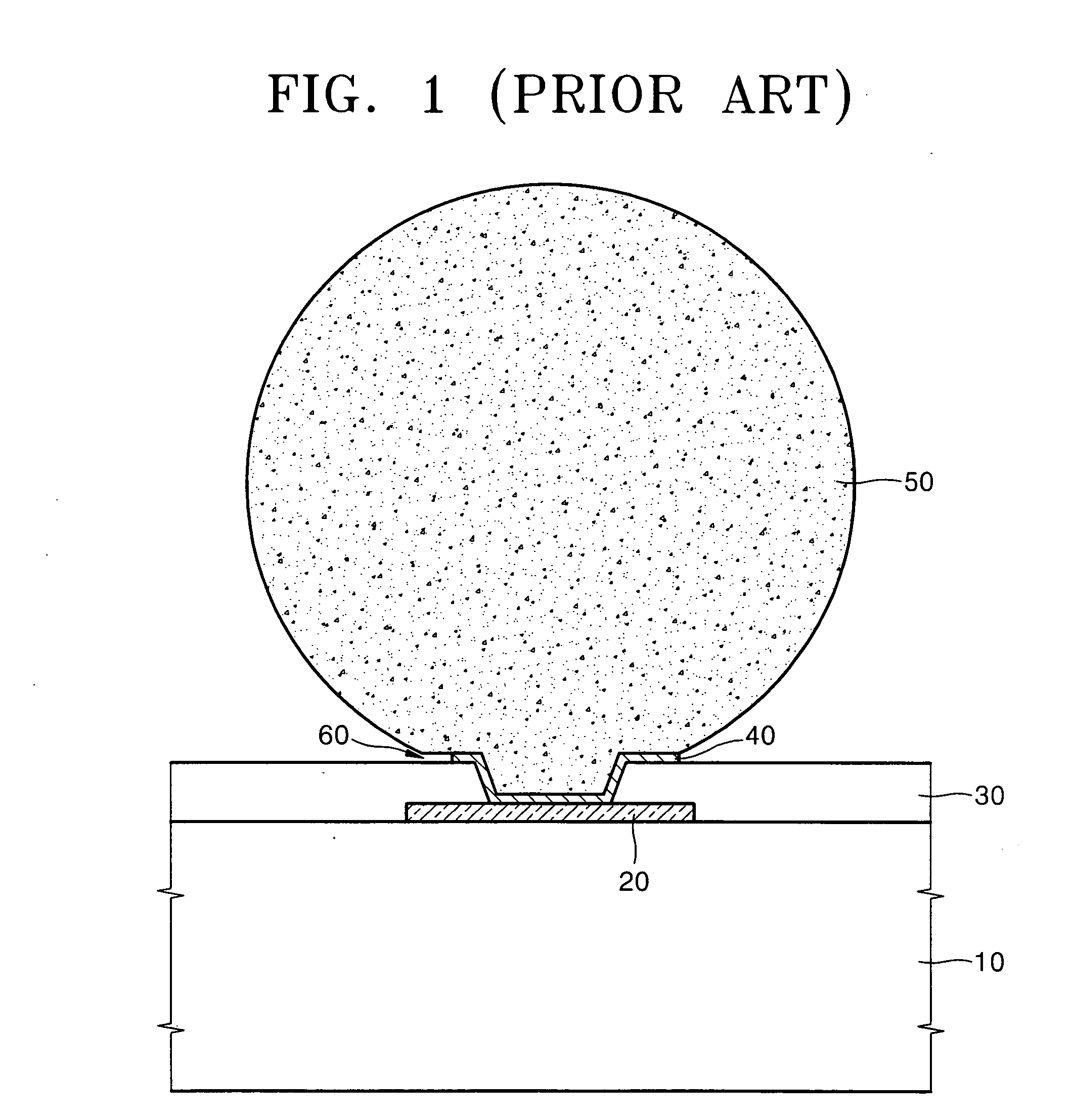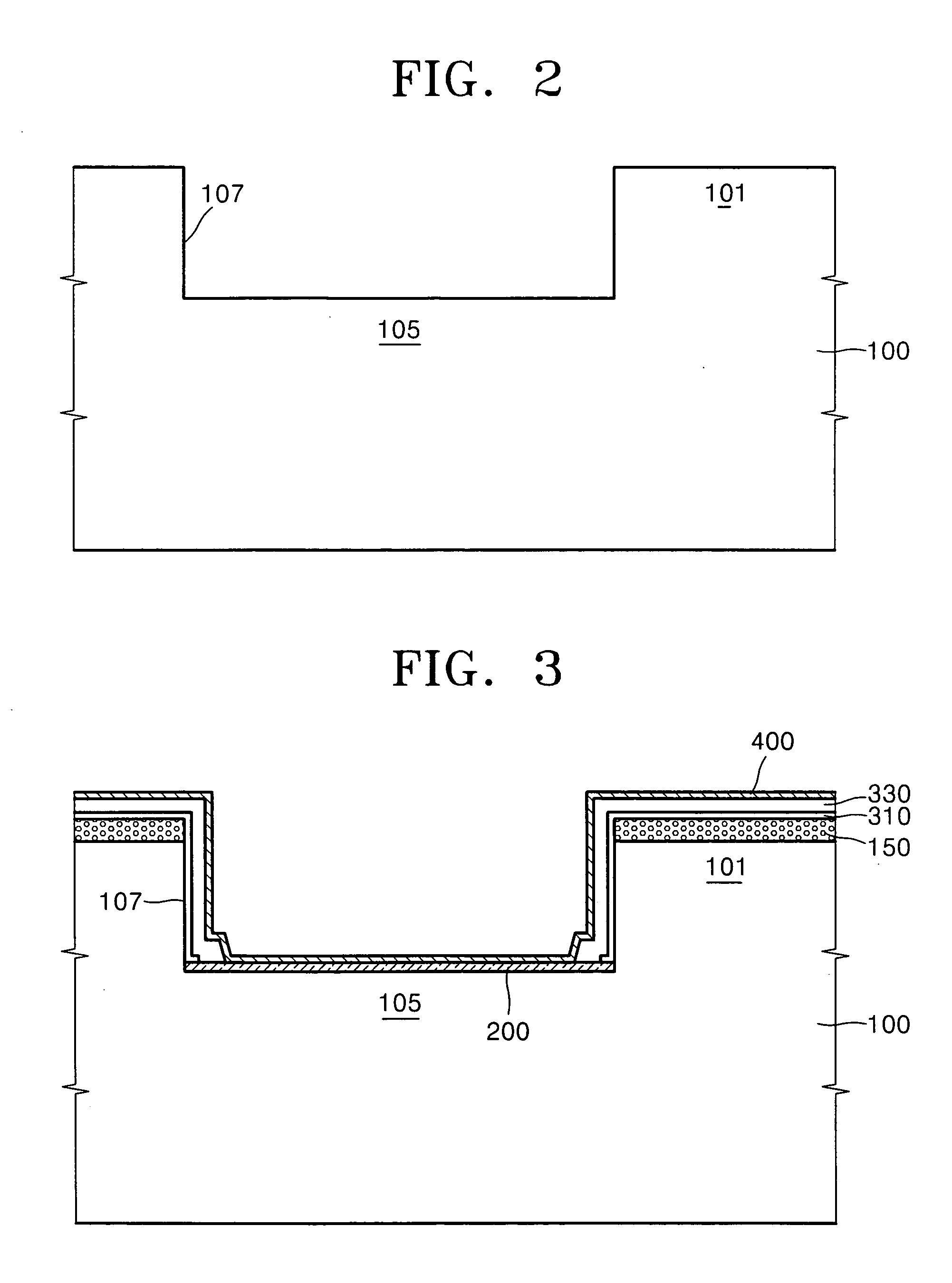Bump structure of semiconductor device and method of manufacturing the same
a semiconductor device and bump technology, applied in semiconductor devices, semiconductor/solid-state device details, electrical devices, etc., can solve problems such as reducing reducing the reliability of the device, and affecting the performance of the device, so as to achieve the effect of increasing the bonding force of the bump in the semiconductor packag
- Summary
- Abstract
- Description
- Claims
- Application Information
AI Technical Summary
Benefits of technology
Problems solved by technology
Method used
Image
Examples
first embodiment
[0039]FIGS. 2 through 6 are sectional views illustrating a bump of the semiconductor device and a manufacturing method thereof according to the present invention.
[0040] Referring to FIG. 2, a groove 107 in which a lower end portion of a bump will be partially buried is formed in a wafer or a semiconductor substrate, e.g., a silicon semiconductor substrate 100. That is, the groove 107 is formed in a bump pad region 105 of the semiconductor substrate 100 where the bump will be formed or bonded. The groove 107 may have a deep trench geometry, and may be placed where the bump pads are formed when considering the structure of the semiconductor device.
[0041] A depth of the groove 107 is determined in consideration of the thickness and the diameter of the resulting desired bump, which is several μm to several tens of μm deep.
[0042] The groove 107 can be formed to be several tens of μm deep when considering the height of the resulting bump in one example, when the thickness or diameter of...
second embodiment
[0056]FIGS. 7 through 9 are sectional views illustrating a bump structure of a semiconductor device according to the present invention.
[0057] Referring to FIG. 7, a mask pattern 115 as a sacrificial layer for forming the groove is formed on a bump pad region 105 of a semiconductor substrate 100 or Silicon On Insulator (SOI) substrate to which a bump is formed or attached. The mask pattern 115 is formed to cover the bump pad region 105 and to expose a device region 101 where the device will be formed. The mask pattern 115 can optionally be composed of an insulating material such as silicon oxide or silicon nitride. Also, the thickness of the mask pattern 115 is determined by considering the resulting depth of the desired groove to be formed.
[0058] Thereafter, a selective epitaxial growth procedure is performed to the silicon surface of the semiconductor substrate 100 exposed by the mask pattern 115, thereby forming a semiconductor layer 110 on which devices will be formed. Preferabl...
PUM
 Login to View More
Login to View More Abstract
Description
Claims
Application Information
 Login to View More
Login to View More - R&D
- Intellectual Property
- Life Sciences
- Materials
- Tech Scout
- Unparalleled Data Quality
- Higher Quality Content
- 60% Fewer Hallucinations
Browse by: Latest US Patents, China's latest patents, Technical Efficacy Thesaurus, Application Domain, Technology Topic, Popular Technical Reports.
© 2025 PatSnap. All rights reserved.Legal|Privacy policy|Modern Slavery Act Transparency Statement|Sitemap|About US| Contact US: help@patsnap.com



